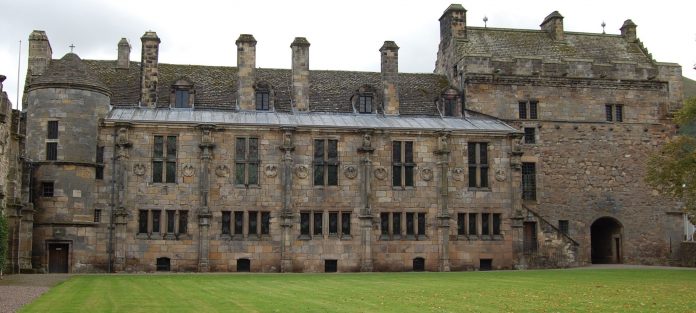The Roundels are located some 7m up on the south Range of the Palace and form part of the alterations to the Palace completed by James V in 1541. There are 10 roundels on the south range, of a quality comparable to contemporary sculpture in France and Italy. They were probably carved by the French master mason Nicholas Roy, who was brought over by James V who wished to recreate the splendour of the French court. They form part of the most advanced Renaissance architectural programme in Britain of their time.
SfM works by matching features within a series of overlapping photographs to create a digital model. The more photographs that are used in the processing which are taken at a variety of positions and angles, the greater the accuracy of the pixel-matching and therefore the entire model.
Developed in the 1990s by computer scientists, the technique has undergone a huge growth in the last 5 years due to the availability of high resolution digital cameras, the increase & affordability of computer processing power and the availability & affordability of SfM software such as Bundler, Photoscan and VisualFSM.
A number of studies have compared the data created by SfM and by laser scanning, although the majority concentrating on geological landscape surveys. Those focussed on comparing data for heritage applications found on average a 90%+ match between the point clouds but noted that SfM achieves a higher accuracy on small to medium scale rather than large area landscapes and structures which are more suited for laser scanning.
The process of alignment automatically matches and triangulates pixel patterns within the photographs allowing the software to calculate the camera positions and reconstruct the object geometry. EXIF data contained within each photograph provides information such as focal length and allows the software to correct lens distortion.
Algorithms and triangulation of the matched pixels produce, in the first instance, a 3D point cloud in a virtual space. The result of this is a representation of the object captured in the original photographs. Due to the lack of ground-control points (GCPs) initially the point cloud is at an arbitrary scale and location within the virtual world, although the point cloud can be correctly scaled and if required re-located using captured survey data.
The point cloud can then be meshed to form a 3D model and a texture for the model can be generated from the original photographs.
The conservation of the roundels at Falkland Palace provided a rare opportunity for them to be photographed with a level of coverage suitable for SfM. Two sites visits across a number of weeks by the Archaeology Team allowed the capture of the 10 roundels at an average of 40 images per roundel.
Aligning the Images
The images were then aligned using Agisoft Photoscan, which produced the camera positions and a sparse point cloud for each roundel. Further processing produced the dense point clouds, with each of the points coloured according the photograph. The point clouds were then tidied up in Photoscan to remove both extraneous points and the surrounding stonework.
Following the tidying up of the point clouds, they were then meshed into 3D models and then textured using the original images.
of the armour breast-plate and the laurel wreath now visible
The models provide an accurate representation of the roundels which are located some 7m up on the outer wall of Falkland Palace, and will allow visitors to see the roundels in a way which would not have been possible previously.
The meshes have also been imported into the Meshlab software, as this has allowed us to move a virtual light source around each roundel which has helped us see detail of the roundels which was not previously possible. There is also a plugin for Meshlab called Radiance Scaling which “adjusts reflected light intensities in a way dependent on both surface curvature and material characteristics”. This technique when using the ‘dual lit sphere’ option has greatly enhanced the detail visible on each roundel model, highlighting elements of the carving which have, in recent years, been hard to see.
The Trust’s Archaeologists are now undertaking research into the identity of the figures in each roundel which is not an easy task, and having the 3D models to hand is an incredibly useful tool when wanting to study each figure in depth. The models created can be saved as a 3D PDF allowing them to be viewed on any computer without specialist software and they have also been uploaded to the Sketchfab website allowing anyone with an internet connection to view and interact with the models.
(View the full gallery of roundels here: https://skfb.ly/FsXX )
Falkland Palace Roundel 1
by NTS Archaeology
on Sketchfab
Stefan Sagrott
Archaeological Data Officer, National Trust for Scotland




